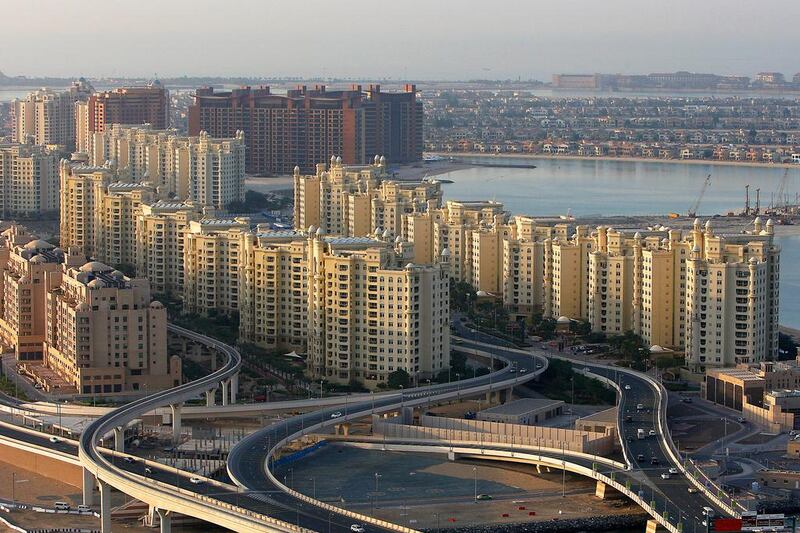Residential property transactions in Dubai are rising, but the price trajectory remains unclear as developers selling off-plan units drive down prices in the affordable housing sector and create a stock of low-quality residential units in the emirate , brokers said on Tuesday.
The number of deals for built units since the beginning of this year has increased by 7 per cent year-on-year, while off plan sales jumped 62 per cent, according to Core Savills.
"As we enter the final quarter of 2017, a year in which most market players expected the Dubai residential market [prices] to bottom out, there remains a clear lack of direction," said the broker. "Despite higher year-on-year transaction volumes, uncertainty and concerns of oversupply have produced divergent sale price trends and further market fragmentation between performing and non-performing communities."
The market fragmentation is being exacerbated by developers who are behind a big chunk of off-plan new stock in the mid-market segment and are attracting investors, particularly, to the below Dh1 million price point, the broker said.
_______________
Read more:
[ UAE residential rental property market to slip further this year, Cluttons says ]
[ Investor sentiment for Dubai's residential property weakens, a new survey shows ]
_______________
Average unit value in the off-plan affordable housing segment fell by 11 per cent compared to last year as new inventory and easy payment options continue to push prices lower, Core Savills said.
“This further illustrates developers’ current strategy of bringing lower entry products to the market while competing on prices,” said the broker. “Instead of adjusting supply to demand, a few developers are taking the risk of adjusting prices, in some cases by offsetting quality or shrinking their margins."
The off-plan sales are concentrated in the affordable market segment, which includes a two bedroom unit below Dh1 million, and some properties in the mid-market segment, which ranges between Dh1-2.5 million for 2-3 bedroom apartments. According to Core Savills statistics, the mid-market segment represented 52 per cent of deliveries in the third quarter, followed by affordable segment with 28 per cent.
“If sales and tenant demand for such (off-plan) products has been overestimated, this may not be sustainable in the long term,” said the broker.
“This trend also affects the secondary sales market, artificially reducing prices, as individual landlords try to keep pace with off-plan prices that are bringing area averages down and dampening recovery.
Overall, apartment property prices in Dubai were down 4 per cent year-on-year in the third quarter and flat quarter-on-quarter, with off-plan sales driving down rates, according to an Asteco report.
“These developments now demand a larger share of the sales volumes compared to completed units, with rates continuing to decline as a result,” said John Stevens, managing director of Asteco. “Compounding the issue, despite increased government spending on infrastructure, hospitality and retail in the run-up to the Expo 2020, is that market sentiment remains low. This is largely due to weak employment growth and the bearish outlook in terms of oil prices and global economic outlook.”
Both brokers expect deliveries to continue in the ramp-up to the Expo, but Core Savills cautioned that the quality of off-plan products will not meet the demands of the end-users.
“Although we anticipate the number of proposed units and actual hand-overs to vary notably, we expect developers to continue building in the run up to 2020 creating a significant surplus in the lower end of the market that does not adequately address the needs of target end-users,” said Core Savills. “Despite stronger regulations being in place, we continue to view increasing off-plan activity with caution, particularly given its detrimental effect on ready sales that fuels further systemic market risk.”






